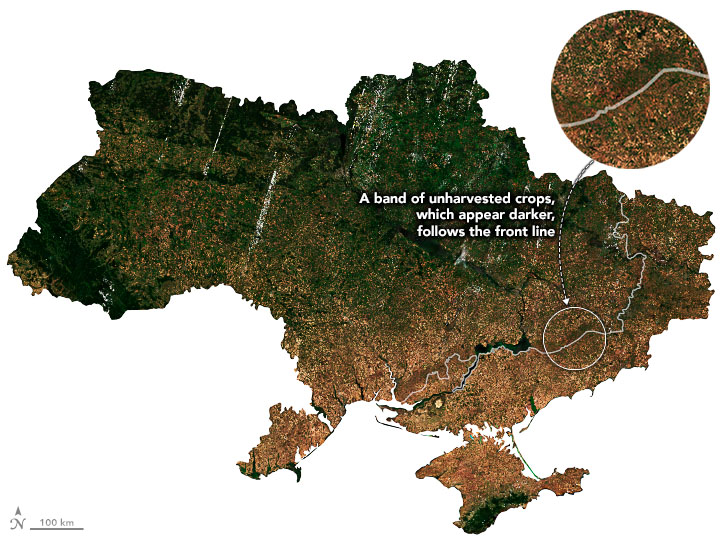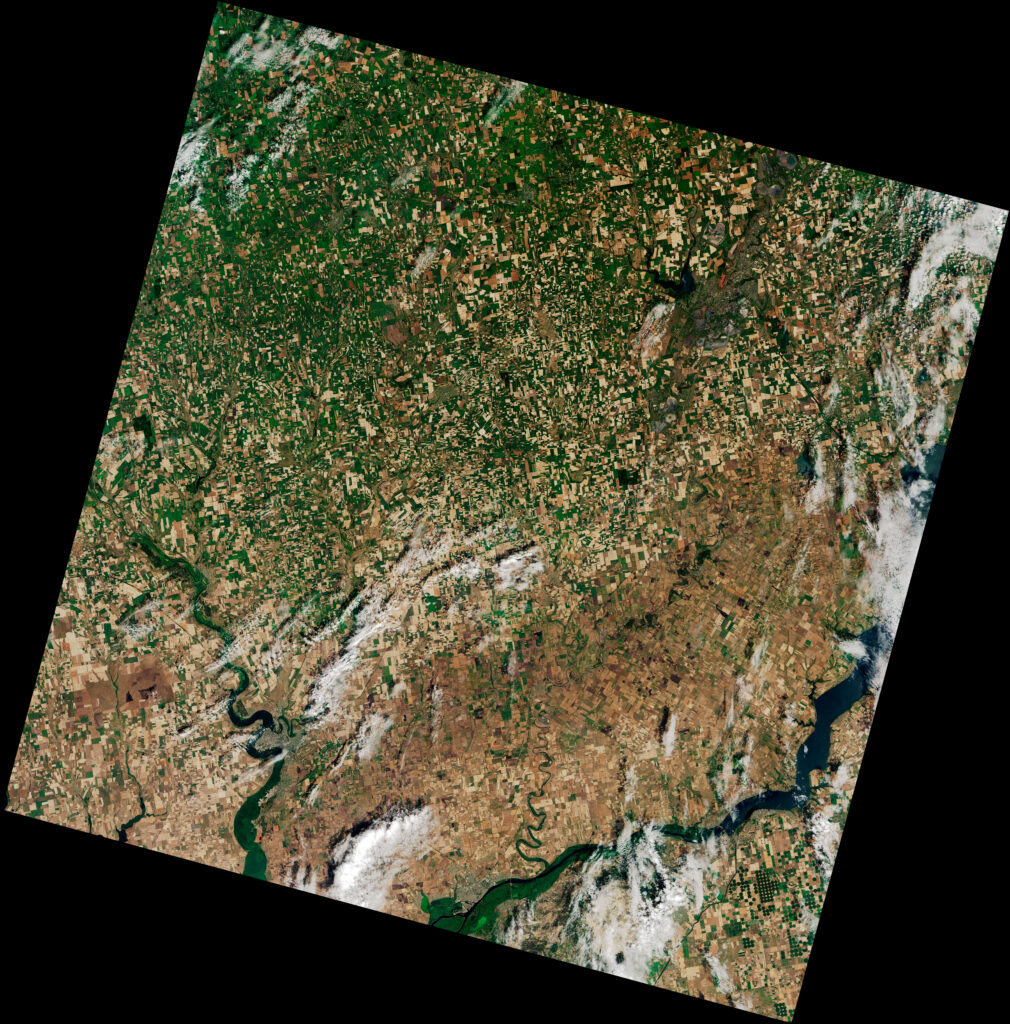Russia’s invasion of Ukraine on February 24, 2022, caused not only serious destruction, but also caused concern about the consequences for the country’s agricultural sector. In the first days of the war, food security experts were interested in whether Ukrainian farmers would be able to harvest wheat and barley that they sowed last autumn. Further, due to the blocking of ports, Ukraine could not export grain to other countries for a long time, which could lead to unrest in global markets and cause food shortages and possible famine in other countries that depend on imports of Ukrainian products. But NASA Harvest research has shown encouraging results.

“Our satellite-based production numbers for the 2022 winter wheat crop in Ukraine make clear that farmers had a largely successful harvest,” said Inbal Becker-Reshef, director of the NASA Harvest program.
According to NASA Harvest estimates, Ukrainian farmers harvested 26.6 million tons of wheat in 2022. This is slightly less than expected, but close to the five-year average of 27.9 million tons. However, due to the war, Ukraine does not have access to 22% of this wheat in the occupied east.
“The risks on the ground during the war have made the NASA Harvest monitoring system one of the only safe and reliable ways for researchers to track what is happening to crops in Ukraine The system combines satellite observations and modeling to assess the planting, growth, and harvest of key commodity crops. Data come from the commercial satellite company Planet, NASA, and the European Space Agency. NASA researchers have been working together for more than a decade with colleagues from the Ministry of Agrarian Policy and Food of Ukraine, the University of Maryland, the University of Strasbourg, the Group on Earth Observations Global Agricultural Monitoring Initiative (GEOGLAM), ESA World Cereals, National Technical University of Ukraine “Igor Sikorsky Kyiv Polytechnic Institute”.
What did the satellites see?

The NASA Harvest team used satellites to monitor the remaining unharvested territories and found that they were mostly concentrated along the front line. In the above mosaic of natural colors of Ukraine, the unharvested wheat fields (dark brown) stand out in comparison with the harvested (light brown) fields in the north and south. A lighter brown color is a sign of plant residues that cover the fields after the harvesting machinery has cut the wheat and separated the valuable parts. The image is compiled every two weeks based on PlanetScope images collected from July 12 to 26, 2022, by Dove satellites.
The Landsat image shows harvested wheat in the vicinity of the urban-type settlement of Bereznehuvate compared to unharvested wheat around Velyka Oleksandrivka. The image in natural colors was obtained using the Operational Land Imager on Landsat 8. The satellite scans fields measuring 30 meters per pixel.
Concerns about crop risks
At the beginning of Russia’s full-scale invasion in February, analysts warned that from 20% to 30% of winter crops in Ukraine might not be harvested. However, the analysis of NASA Harvest shows that 94% of winter crops were harvested, including 88% of winter crops in territories not controlled by Ukraine. Thanks to the lifting of the blockage of several Black Sea ports, part of the harvested Ukrainian grain eventually reached world markets. Since the beginning of the war, about 5.4 million tons of wheat have been shipped from Ukraine, as evidenced by data from the Ministry of Agrarian Policy and Food of Ukraine in November 2022.
However, Russia is likely to benefit from the stolen harvest from Ukraine. The analysis showed that 5.8 million tons of wheat were harvested from the territories not controlled by Ukraine, which means a loss of at least USD 1 billion.
A decrease in global demand for wheat and an increase in supply helped stabilize world wheat prices in the summer. “But this doesn’t mean the food crisis is over. International food prices remain high by historical standards, markets remain tight, and high price volatility continues—especially for wheat,” explained Joseph Glauber, advisor to NASA Harvest and senior researcher at the Institute for Food Policy Research.
Earlier we reported on how Maxar Technologies published photos of Soledar and Bakhmut.
According to EarthObservatory.
Follow us on Twitter to get the most interesting space news in time
https://twitter.com/ust_magazine

